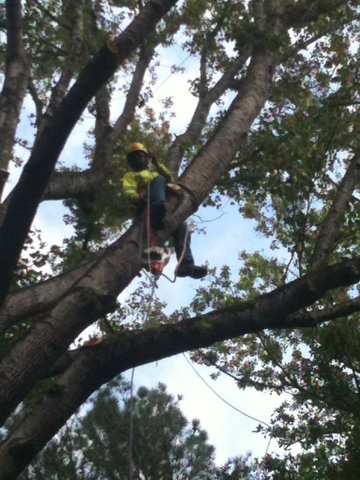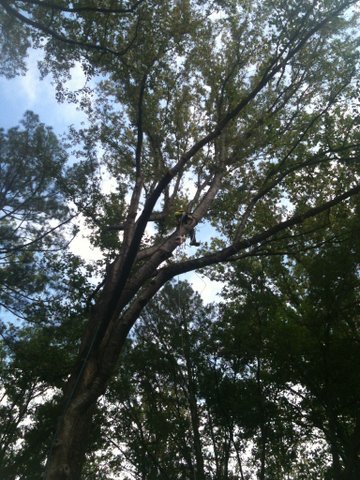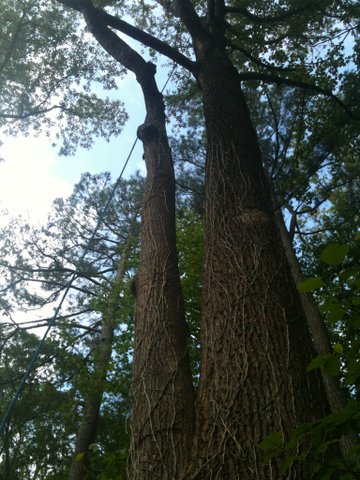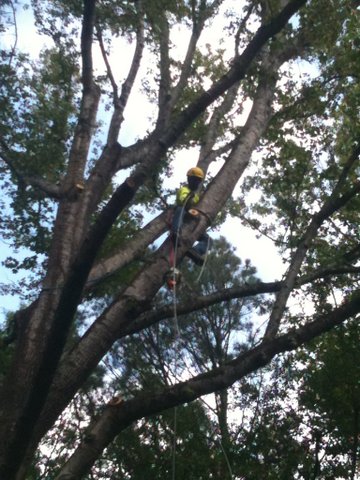Sometimes trees can benefit from structural support. In cases where a tree is well suited to an area, or is planted by an ancestor, or just well-loved, cabling can hold a tree together and prevent the loss of a limb or splitting of a double trunk. If you think a tree may need cabling, call Boutte Tree for a consultation with an arborist.
Jason, one of our climbers, recently installed some cables in a big tree – photos below.
As part of Jason’s training, he is learning from our top Arborist, Robert Brettschneider, how to properly install cables…..
These 2 stems were cabled together to support one-another.
If you decide to install one or more cables, make sure that they are professionally installed. Sometimes the best strategy is to lightly thin the tree’s crown in conjunction with cabling. There are presently two schools of thought with regards to cables: Static steel cables and Dynamic synthetic cables.
Both types of cables are used to support weak unions in the tree, almost always in the case of co-dominant stems (“double” trees) or a cracked branch union. The cable should be installed about 2/3 of the distance from the weak union to the end of the stem. The design and installation of both are described below.
Steel Cables
These high-strength steel wires, usually between 1/8” to 3/8” in diameter, are attached with hardware into the trunk of the tree.
For small stems a J-lag screw should be installed to the full length of the threads. Any large branches or trunks should have drop-forged eye bolts extending through them and held with a washer and nut on the back side. Cables should be swaged or dead-ended to a thimble that goes around the J-lag or eye bolt. The thimble prevents severe bending of the wire. Cables are installed with enough tension to remove all slack from the cable.
There are sometimes complications arising from steel cabling. Because trees naturally add wood to their circumference every year, they annually strengthen themselves to compensate for co-dominant stems, large limbs or other imbalances. They strengthen themselves by adding wood where it is most needed, reducing the stress in that area. Known as the axiom of uniform stress, this follows from the observation that trees always have much thicker growth rings in areas of high stress. Adding a cable can help support the tree, but may result in less wood formation to support that part of the tree that has been cabled. Thus, steel cables once installed must be maintained and replaced when necessary.
Synthetic cables
Synthetic cable are made of high strength rope with some shock-absorbing properties and attached around the trunks instead of through them. They vary in diameter from 3/8” to ¾” in diameter.
The cables are attached loosely and only become tight when the tree is deformed due to load. At the point where the cables go around the trunk, a wide insert spreads the load to prevent the rope from damaging the bark. The cables are self-adjusting and become larger as the tree gets bigger to prevent girdling.
Synthetic cables are gaining in popularity due to their ability to allow the tree to grow naturally, yet still aid in an emergency.




